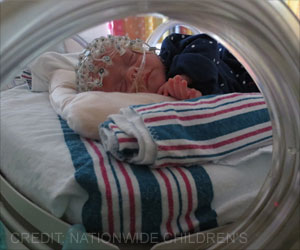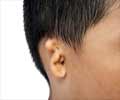Babies from bilingual moms are sensitive to more speech variations, while monolingual babies are tuned to a single language.
- Newborns from bilingual mothers are sensitive to a broader range of speech sounds
- Monolingual babies show more defined neural responses to specific speech sounds
- Prenatal language exposure significantly influences newborns' brain encoding of speech
How do Fetuses Learn Speech?
What was unknown until now was how developing fetuses learn speech when their mother speaks to them in a variety of languages. However, this is common: there are 3.3 billion bilingual persons (43% of the world's population), and bilingualism or multilingualism is the standard in many nations."Here we show that exposure to monolingual or bilingual speech has different effects at birth on 'neural encoding' of voice pitch and vowel sounds: that is, how information about these aspects of speech has been initially learned by the fetus," said Dr Natàlia Gorina-Careta, a researcher at the University of Barcelona's Institute of Neurosciences and the joint first author of a new study published in Frontiers in Human Neuroscience (1✔ ✔Trusted Source
Exposure to bilingual or monolingual maternal speech during pregnancy affects the neurophysiological encoding of speech sounds in neonates differently
Go to source).
"At birth, newborns from bilingual mothers appear more sensitive to a wider range of acoustic variation of speech, whereas newborns from monolingual mothers seem to be more selectively tuned to the single language they have been immersed in."
Exploring Bilingual and Monolingual Language Exposure in Newborns
Gorina-Careta and colleagues conducted their research in Catalonia, where 12% of the population regularly uses both Catalan and Spanish. They enlisted the moms of 131 newborns aged one to three days (including two pairs of twins) at Sant Joan de Déu Barcelona Children's Hospital to volunteer.In a questionnaire, 41% of these moms stated that they talked exclusively Catalan (9%) or Spanish (91) during their pregnancy, including when speaking about their growing belly. The remaining 59% had talked in two languages (at least 20% of the time in the second language): Spanish and Catalan, or a combination of these plus Arabic, English, Romanian, or Portuguese.
"Languages differ in terms of speech timing, such as rhythm and accentuation, as well as pitch and phonetic information. This suggests that fetuses from bilingual moms are likely to be exposed to a more complex auditory environment than those from monolingual mothers," said Dr. Carles Escera, a professor at the same institute and one of the two corresponding authors.
The researchers placed electrodes on the babies' foreheads to measure a specific type of electrophysiological brain response - the 'frequency-following response' (FFR) - to repeated playback of a carefully selected sound stimulus, 250 milliseconds long and divided into four stages: the vowel /o/, a transition, the vowel /a/ at a steady pitch, and /a/ rising in pitch.
Role of Low-Frequency Vowels in Prenatal Auditory Research
"The contrasting vowels /o/ and /a/ belong to the phonetic repertoire of both Spanish and Catalan, which is partly why we chose them," said joint first author Dr. Sonia Arenillas-Alcón of the same institute."Low-frequency sounds like these vowels are also transmitted through the womb reasonably well, unlike mid- and high-frequency sounds that reach the fetus in a degraded and attenuated manner."
The FFR analyzes how exactly neurons in the auditory cortex and brainstem create action spikes that mirror the stimulus's sound wave properties. A more distinct FFR indicates that the brain has been better trained to detect that specific sound. For example, the FFR can be used to assess the level of auditory acquisition, linguistic experience, and musical training.
The authors demonstrated that the FFR to playback of the /o a/ sound was more distinctive, that is, better defined and with a higher signal-to-noise ratio, in babies from monolingual moms compared to newborns from bilingual mothers.
Influence of Prenatal Language Exposure on Newborn Brain Encoding
These findings imply that the brains of monolingual moms' fetuses have trained to be highly sensitive to the pitch of mere language. In contrast, the brains of multilingual mothers' fetuses appear to have become more sensitive to a wider variety of pitch frequencies, but they do not respond maximally to any of them. There may be a trade-off between efficiency and selectivity while learning about pitch."Our findings suggest that prenatal language exposure influences brain encoding of speech sounds measured at birth. These findings highlight the significance of prenatal language exposure in the encoding of speech sounds at birth and provide new insights into its impacts," stated Escera.
Reference:
- Exposure to bilingual or monolingual maternal speech during pregnancy affects the neurophysiological encoding of speech sounds in neonates differently - (https://www.frontiersin.org/articles/10.3389/fnhum.2024.1379660/full)
Source-Medindia










